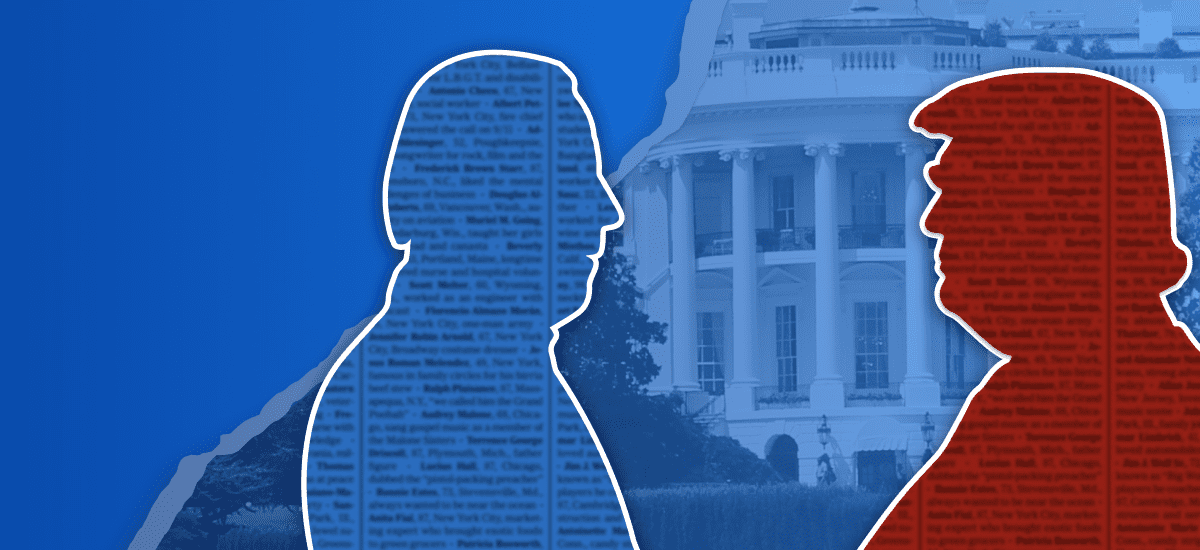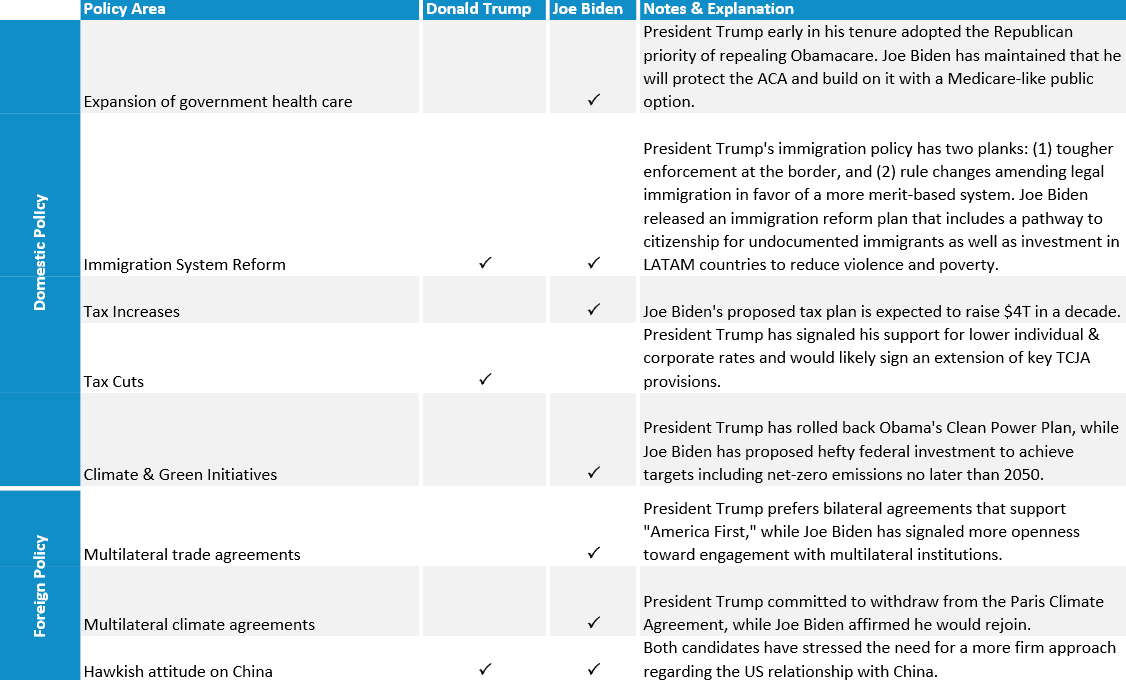This week, we sat down with Michael Zezas, Managing Director of U.S. Public Policy Research & Municipal Credit Strategy at Morgan Stanley, to discuss the 2020 Presidential Election. In his presentation, Zezas covers the current state of the election, policy paths, fiscal stimulus, and relations with China.
To watch Zezas’s full presentation and view all of our webcasts, check out the Expert Briefing Series.
To read the report behind this presentation, along with more Morgan Stanley research, login to AlphaSense or start a free trial.
What’s at Stake in the 2020 Presidential Election?
We are currently five months away from the 2020 election, and early analysis indicates that Joe Biden has an advantage over a second term for President Trump. Even with Mr. Biden’s advantage in the 2020 Presidential race, Democrats need to win Congressional seats in battleground states to make tangible policy changes.
Analyzing Donald Trump’s and Joe Biden’s policy platforms shows that there is a lot at stake–particularly for overall economic recovery for corporate America, small businesses, and individuals post-coronavirus.
Policy trajectory from Michael Zezas’s webcast presentation showing the legislative agendas and policy priorities for Donald Trump vs. Joe Biden.
The outcome of the 2020 election will determine if the United States can sustain economic recovery–particularly as COVID-19 requires more spending. Since early 2020, the United States government has provided more and more financial assistance to corporate America, small businesses, and individual households. Now, Zezas predicts that the United States will likely need another round of stimulus this summer to keep the economy moving.
In such a volatile state, and with many important domestic and foreign policy issues hanging in the balance, the difference between a Donald Trump presidency (with a Republican-held Congress) and a Joe Biden presidency (with a Democrat-held Congress) is significant.
Plausible Policy Paths
Morgan Stanley analyzed 1-year completion rates of first-term Presidential promises since World War Two. The findings indicated that a President’s policy platform does not always equate to the legislation they pass once in-office, particularly if the majority party in the House and Senate opposes a President’s policies.
Morgan Stanley Research survey of 77 first-term Presidential campaign promises accomplished during the first 12 months of an incoming President’s term, based on review of historical press and Congressional record.
When Congress and the Executive branch remain divided, Presidents have less room to achieve their platform promises. About one-third of campaign promises get done, and that is only if the President’s party is carrying both areas of Congress.
Dive Deeper into Morgan Stanley Research
This presentation was based on Zezas’s recently published report: “2020 US Election: A Revised Guide to Economic Policy Paths & Market Impacts.” To read the full guide, along with more Morgan Stanley research, login to AlphaSense or start a free trial.
To watch Zezas’s full presentation, including deeper dives into the United States’ relationship with China and election impact across sectors, visit our Expert Briefing Series.





